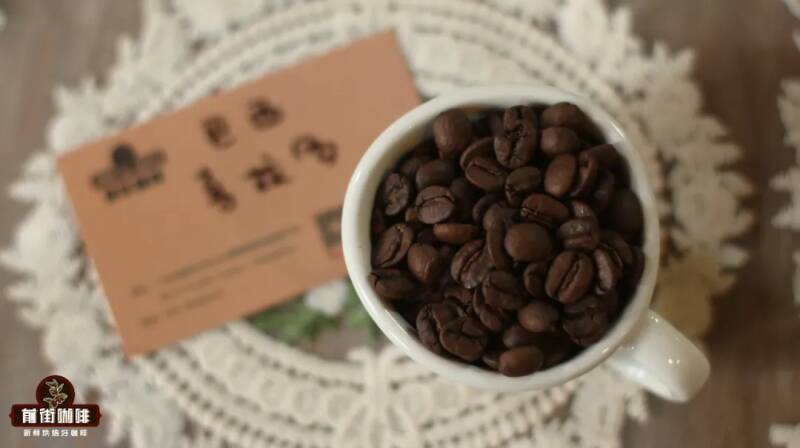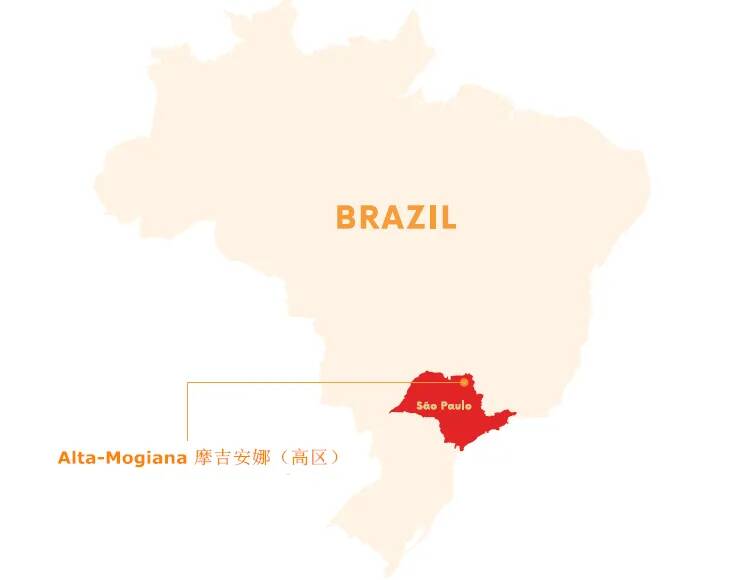Where is Brazilian boutique coffee produced? What manor is there?
South America is the fourth largest continent in the world, with natural environmental resources such as the Andes and the plains of Brazil, and is a continent with more volcanoes in the world, with fertile soil given by volcanic ash, and a tropical climate in most areas. warm and humid, these conditions are very suitable for coffee cultivation, so South America has many large coffee-producing countries, such as Brazil, Colombia, Ecuador and so on.
In South America, the largest country is Brazil. Because of its strong industrial base and developed agriculture, 17 of the 26 states in Brazil produce coffee, which makes Brazil the largest coffee producer in the world.
The topography of Brazil is mainly divided into two parts, one of which is concentrated in the Amazon River basin in the northwest, while the southeast is mainly in the Brazilian plateau above 500 meters above sea level, where the soil is mainly laterite, so the south is very suitable for the cultivation and growth of tropical crops such as coffee.
Most parts of Brazil are tropical, and parts of the south are subtropical monsoon humid climate, with high temperature and rainy summer, while mild and humid winter, with a large temperature difference between day and night, with an annual average temperature of 21 ℃. Brazil has a vast territory and abundant resources. in addition to growing coffee in many states, its superior geographical conditions and climate also make Brazil the country with the largest coffee production.
Although Brazil has 17 states that grow coffee, coffee is mainly grown in four states, Parana, Sao Paulo, Minas Gerais and EspiritoSanto, which account for 80% of the country's total coffee production and grow two major coffee varieties, Arabica and Robsta.
Among them, the best-known and largest producer is the state of Milas Gerais, which accounts for 30% of the country's coffee production. The relatively famous sub-regions of Syracuse and South Minas are in this state, and South Minas is known as the heart of Brazil's coffee industry. Qianjie Coffee has a half-sun-treated Shirado coffee, as an entry selection, with chocolate flavor and nutty flavor, taste balanced.

In addition, the state of Sao Paulo (Sao Paulo) is also one of the important producing areas in Brazil. Sao Paulo is located in the southeast of Brazil, with Rio de Janeiro and Minas Gerais to the northeast, Mato Grosso to the west and Parana to the south. The terrain is high in the southeast and low in the northwest, with a subtropical climate, with an annual average temperature of 20 ℃.
The most famous sub-region in the state of Sao Paulo is Morgiana Alta Mogiana ("Alta" means "high" in Brazilian), located in the northern part of Sao Paulo, near the high mountains of the state of Milas Gerais, one of the higher elevations, between 1000 and 1400 meters above sea level. However, due to the limited degree of mechanization in steep terrain areas, manual harvesting is mostly used here. Thanks to the high altitude, fertile soil, mild climate, sufficient sunlight and abundant Rain Water, it is a high-quality environment for growing coffee crops.

As a result, there are many well-known coffee estates in the Mojiana area. For example, Qianjie Coffee has a half-sun-treated Fazenda Rainha yellow bourbon coffee, which has sweet fruit, nutty flavors such as sugar cane, chocolate and peanuts, weak and clean bitterness, and a smooth and delicate taste.
Then there is Fazenda Recreio, which was founded in 1890 and has been managed by Teixeira de Macedo J ú nior and his family for five generations. At present, he mainly has his son Diogo Dias Teixeira de Macedo Management, who majored in agronomy and has been working on the estate since 2000, studying coffee cultivation and processing.
In addition, farmers attach great importance to environmental protection, divided into environmental protection areas, primary vegetation and lush flora and fauna. Due to geography, coffee crops here are harvested manually, so there is a complete infrastructure here, and coffee is carefully marked from harvest to transportation and warehouse storage in order to ensure the quality and origin of the coffee produced.
As a result, the estate began to participate in the Brazilian Excellence Cup in 2004 and was the runner-up in 2008. The estate previously planted varieties such as Bourbon Bourbon, Kaduai Catuai, Iron pickup Typica, New World Mundo Novo, etc., and then the farm participated in the specialty coffee program of the Campinas Agricultural Research Institute (IAC) to grow rose Geisha varieties, which won fourth place in the Brazilian Excellence Cup in 2023.
Important Notice :
前街咖啡 FrontStreet Coffee has moved to new addredd:
FrontStreet Coffee Address: 315,Donghua East Road,GuangZhou
Tel:020 38364473
- Prev

Shocked! Panama rose summer is selling for 1kg this year for 70,000
In June this year, Panama held the 28th Best Of Panama Competition (BOP) in 2024, a competition organized by the Specialty Coffee Association of Pa
- Next

The girl suddenly died after drinking a drink! Just because the barista added the wrong ingredients!
▲ Click to pay attention| Daily Boutique Coffee Culture Magazine Coffee Factory Recently, the Daily Mail reported that a 13-year-old girl died suddenly after drinking hot chocolate provided by a local Costa coffee shop. Reports said that on the day of the accident, the girl's mother was going to take her to the dentist, but she went through
Related
- Why are the coffee in some coffee shops not enough after being frozen? What should I make up for my American latte cappuccino coffee after being frozen?
- How much water does it take to steam coffee by hand? Why is the coffee brewing and steaming time 30 seconds? What is the purpose of steaming coffee?
- The suspected drink contains too much caffeine! Overlord Tea Lady responds urgently!
- Starbucks rejects antique paper coupons?! Netizen: Missed marketing opportunities!
- What ratio of water temperature and ground does the smart cup method use to press coffee? The difference between brewed coffee and filtered coffee?
- What is the standard process for the purpose of coffee cup testing? What is the difference between hand-brewed coffee and cup testing?
- How to use hand-brewed coffee paragon small golden balls? How does cold coffee lock in the aroma of coffee?
- Is American coffee black? What is the difference between American coffee and drip coffee?
- Unexpected! Well-known tea beverage brand Lele Tea will withdraw from the Zhengzhou market!
- Starbucks enters the fashion and beauty industry?! Netizen: Give me an ice American eye cream

